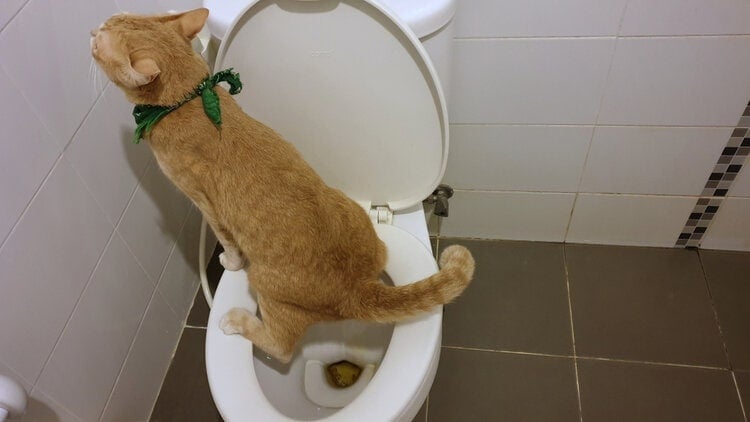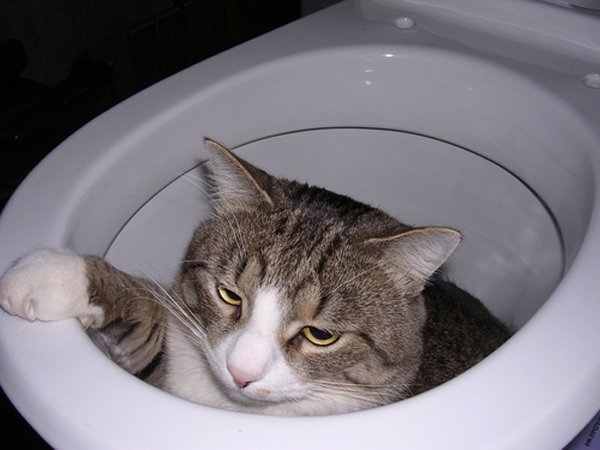Why You Should Never Flush Cat Poop Down Your Toilet - Important Information
Why You Should Never Flush Cat Poop Down Your Toilet - Important Information
Blog Article
Everyone may have their own unique conception in relation to Can You Flush Cat Poo or Litter Down the Toilet?.

Intro
As pet cat proprietors, it's important to bear in mind how we throw away our feline pals' waste. While it might seem hassle-free to purge cat poop down the bathroom, this method can have destructive consequences for both the setting and human health and wellness.
Environmental Impact
Purging feline poop introduces hazardous microorganisms and parasites right into the water, posing a considerable risk to aquatic environments. These pollutants can adversely influence marine life and concession water high quality.
Health Risks
In addition to ecological worries, flushing pet cat waste can also pose health and wellness risks to humans. Feline feces may contain Toxoplasma gondii, a parasite that can create toxoplasmosis-- a potentially serious health problem, especially for pregnant females and individuals with weakened body immune systems.
Alternatives to Flushing
Thankfully, there are much safer and extra liable ways to get rid of cat poop. Think about the following choices:
1. Scoop and Dispose in Trash
One of the most common method of dealing with pet cat poop is to scoop it into a biodegradable bag and toss it in the trash. Be sure to make use of a dedicated trash scoop and dispose of the waste quickly.
2. Use Biodegradable Litter
Select biodegradable cat trash made from products such as corn or wheat. These clutters are eco-friendly and can be securely disposed of in the trash.
3. Bury in the Yard
If you have a backyard, consider hiding feline waste in an assigned area far from vegetable yards and water sources. Be sure to dig deep adequate to avoid contamination of groundwater.
4. Mount a Pet Waste Disposal System
Buy a family pet garbage disposal system specifically created for pet cat waste. These systems utilize enzymes to break down the waste, decreasing smell and ecological influence.
Final thought
Accountable pet possession extends beyond supplying food and shelter-- it likewise involves appropriate waste administration. By avoiding flushing feline poop down the commode and opting for alternative disposal methods, we can decrease our ecological footprint and shield human wellness.
Why Can’t I Flush Cat Poop?
It Spreads a Parasite
Cats are frequently infected with a parasite called toxoplasma gondii. The parasite causes an infection called toxoplasmosis. It is usually harmless to cats. The parasite only uses cat poop as a host for its eggs. Otherwise, the cat’s immune system usually keeps the infection at low enough levels to maintain its own health. But it does not stop the develop of eggs. These eggs are tiny and surprisingly tough. They may survive for a year before they begin to grow. But that’s the problem.
Our wastewater system is not designed to deal with toxoplasmosis eggs. Instead, most eggs will flush from your toilet into sewers and wastewater management plants. After the sewage is treated for many other harmful things in it, it is typically released into local rivers, lakes, or oceans. Here, the toxoplasmosis eggs can find new hosts, including starfish, crabs, otters, and many other wildlife. For many, this is a significant risk to their health. Toxoplasmosis can also end up infecting water sources that are important for agriculture, which means our deer, pigs, and sheep can get infected too.
Is There Risk to Humans?
There can be a risk to human life from flushing cat poop down the toilet. If you do so, the parasites from your cat’s poop can end up in shellfish, game animals, or livestock. If this meat is then served raw or undercooked, the people who eat it can get sick.
In fact, according to the CDC, 40 million people in the United States are infected with toxoplasma gondii. They get it from exposure to infected seafood, or from some kind of cat poop contamination, like drinking from a stream that is contaminated or touching anything that has come into contact with cat poop. That includes just cleaning a cat litter box.
Most people who get infected with these parasites will not develop any symptoms. However, for pregnant women or for those with compromised immune systems, the parasite can cause severe health problems.
How to Handle Cat Poop
The best way to handle cat poop is actually to clean the box more often. The eggs that the parasite sheds will not become active until one to five days after the cat poops. That means that if you clean daily, you’re much less likely to come into direct contact with infectious eggs.
That said, always dispose of cat poop in the garbage and not down the toilet. Wash your hands before and after you clean the litter box, and bring the bag of poop right outside to your garbage bins.
https://trenchlesssolutionsusa.com/why-cant-i-flush-cat-poop/

I hope you liked our piece on How to Dispose of Cat Poop and Litter Without Plastic Bags. Thanks a lot for taking the time to read through our piece. Are you aware of anybody else who is fascinated by the topic? Why not promote it. Bless you for your time. Visit again soon.
Set Up An Appointment Report this page